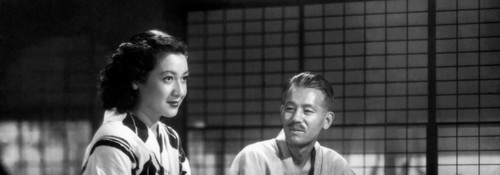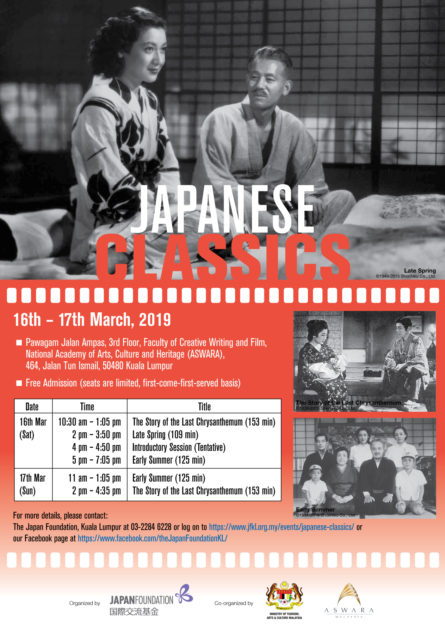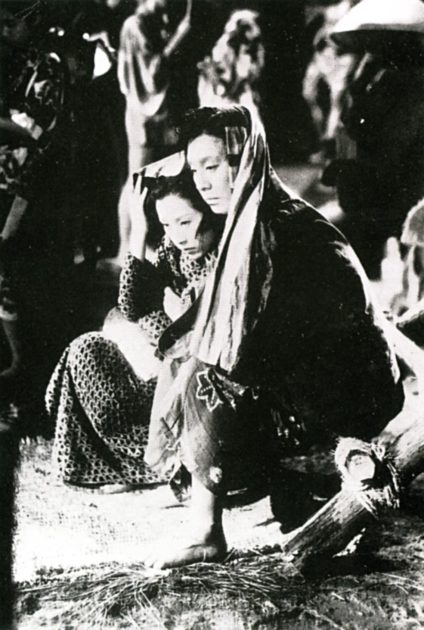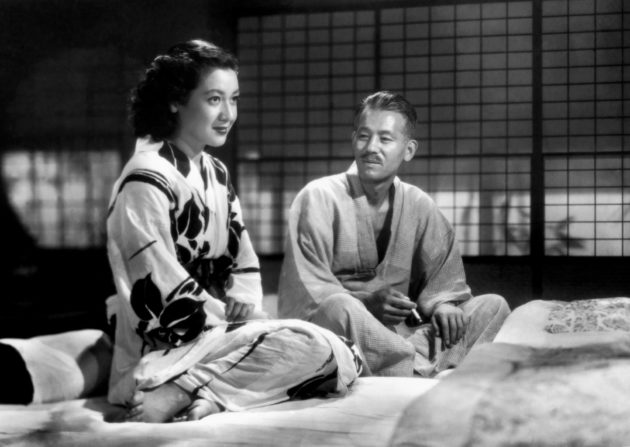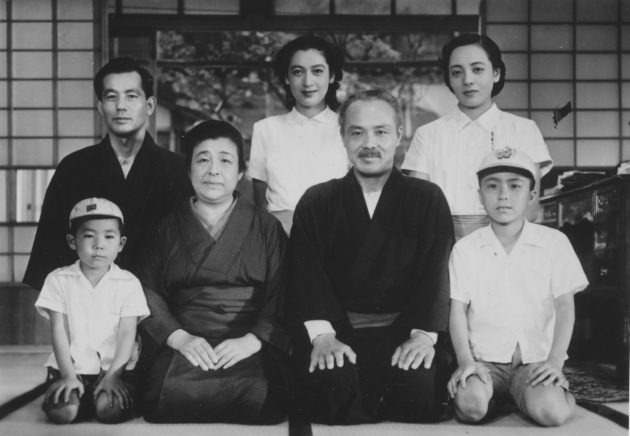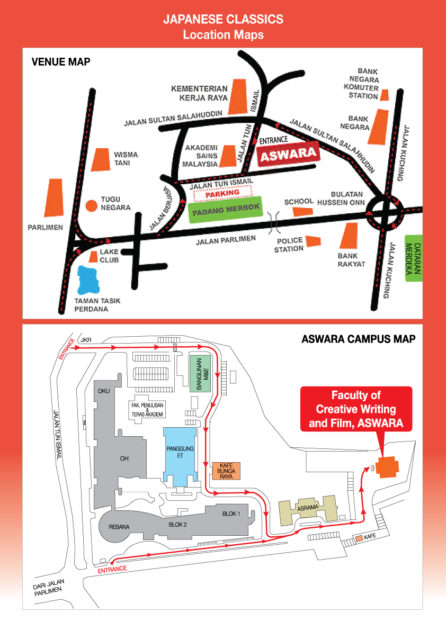In conjunction with the 15th Anniversary of the Japanese Film Festival in Malaysia, JFKL is organizing Japanese classic film screenings with the collaboration of Faculty of Creative Writing and Film, Akademi Seni Budaya dan Warisan Kebangsaan (ASWARA).
Photo Credit: 1939/2015 Shochiku Co., Ltd.
The Story of the Last Chrysanthemum / 残菊物語
Kenji MIZOGUCHI / 1939 / 121 min / B&W / Drama (P13)
Synopsis:
Kikunosuke, the adopted son of a legendary kabuki actor, Kikugoro the 5th is being groomed to follow in his theatrical footsteps despite Kikunosuke?s clearly lack of talent. Servant Otoku is the only one concerned about him but the pair soon falls apart due to Kikunosuke?s adoptive mother Osato?s disapproval. When his father fires Otoku, Kikunosuke leaves home to search for her. They start to live together and with her encouragement, Kikunosuke tries to become a great actor as a member of a touring theatre troupe.
Trivia:
- Selected to be screened in the Cannes Classic Section of the 2015 Cannes Film Festival.
- 2nd place of Kinema Jumpo?s (Japan?s oldest film magazine) list of best films on 1939.
Director Profile:
?MIZOGUCHI is cinema?s Shakespeare, its Bach or Beethoven, its Rembrandt, Titian or Picasso?.
– James Quandt, Senior Programmer at TIFF Cinematheque
Born in Hongo, Tokyo on 16 May 1898, MIZOGUCHI begin his creative career as an advertisement designer with the Yuishin Nippon newspaper in Kobe. In 1920, he returns back to Tokyo to enter film industry as an actor. Three years after that, he got his opportunity to become a film director under Nikkatsu Studio directing his first movie, The Resurrection of Love (1923).
From 1922 to 1956, MIZOGUCHI has made eighty six films. Among them, The Story of Last Chrysanthemums (1939), Life of Oharu (1952), Ugetsu (1953) and Sansho the Bailiff (1954) are considered masterpieces, universally recognized by film aficionado. From these films, you can trace MIZOGUCHI?s commitment not just to situate his work within Japan?s social and cultural history, but also to preserve the Kabuki style and tradition of Japanese dance in screen. Regularly employ long take and a very rich texture to his films, MIZOGUCHI?s style remain as his distinctive signature compare to other directors of his generation.
Nowadays, Kenji MIZOGUCHI hailed as one of the greatest of Japanese directors alongside with Yasujiro OZU, Akira KUROSAWA and Mikio NARUSE.


